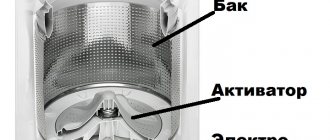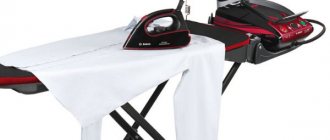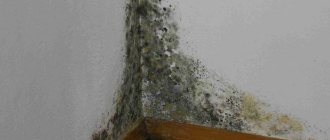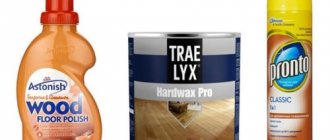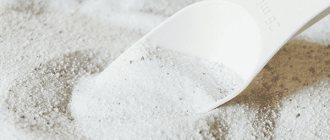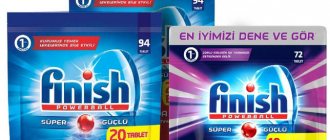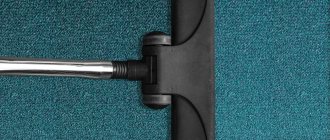The work of any office involves the preparation of paper documents. In this case, there is no escape from errors, blunders, and typos, which can be corrected using clerical putty, clerical putty, or putty, without additional retyping. Office proofreaders, having the main function of correcting defects and errors, differ somewhat from each other.
Stationery putty
Putty or proofreader is a tool used in office work to correct errors in written or printed paper text. After drying, it looks like a white stripe that completely covers the mistake made. The product was born in 1956 thanks to the American Bette Nesmith, who a few years later formed a company called Liquid Paper, which means “liquid paper”. Initially, the gadget was an ordinary watercolor-tempera, which was used to cover up blemishes with a brush. Subsequently, the composition of the corrector was improved many times.
Putties differ from each other both in the method of applying the correction layer, the type, and its composition.
By type of putty there are:
- Liquid. Inside the container with liquid corrector there are often balls that help to better agitate the solution. They are also found in the form of handles.
- Dry. Offers appeared on the market relatively recently and are a tape housed in a plastic case, onto which a layer of dry corrector is applied.
Paper putty: how to choose
The choice of corrector depends on the purpose for which it will be intended. Tape options are usually used to correct typewritten text and major errors. In other cases, liquids are considered more appropriate.
Stationery putty with a brush is the simplest and most affordable option. It has become popular among schoolchildren due to its affordable price and excellent properties. With this tool you can quickly correct any text.
Putty pencil is considered a more universal remedy. But for maximum ease of use, it is recommended to choose the correct tip thickness, which determines the size of the stroke. Manufacturers offer options from 0.8 to 1.0 mm. You also choose the type of liquid supply - it can be forced or carried out by gravity. They also immediately pay attention to the volume of the case, which directly affects the duration of use.
It is impossible to say unequivocally which corrector is better. It all depends on your habit and the type of work you plan to do with the correction fluid.
Types of liquid putties
Liquid correctors are produced in the form of small bubbles or cans, which differ in the methods of applying the composition. It could be:
- brush;
- spatula;
- foam applicator.
The main components of any correction fluid are PVC, calcium carbonate, purified gasoline, titanium dioxide, but they all differ in the base, which can be:
- One. Non-flammable, not dangerous to use, odorless, freezes at low temperatures, and takes a relatively long time to dry.
- Alcohol. It dries quickly, does not freeze in winter, is flammable, and has a pungent odor.
- Emulsion. Dries quickly, has no odor, is resistant to low temperatures, and is not flammable.
When the composition dries inside the container, it is revived by adding a few drops of water and zinc white (gouache). If the corrector is not at hand, you can make it from PVA glue and zinc white (gouache). Mix dried gouache and PVA in equal quantities to form a thick sour cream and apply to the area that needs masking.
Corrector pen
If many mistakes are made, then to correct and disguise mistakes, use a stroke - putty, a corrector with a brush, with the help of which they cover the written layer with a width of 3-4 mm. To correct spot marks, a corrector pen is more suitable, with the help of which a layer 1 mm wide is masked, which, in turn, is inconvenient to use for correcting large errors.
What does it consist of?
The pen is a bottle that holds up to 30 ml of correction fluid, with a tiny metal ball inside for stirring the mixture. There is also a microvalve inside that regulates the supply of composition to the writing element. The pen works in the same way as a regular ballpoint pen: when you press on the paper, the roller bearing rotates and allows the masking fluid to get into the place of the mistake through a hole in the metal tip.
Rules for working with a corrector pen
Just before editing the text:
- shake the handle several times to mix the liquid;
- remove the protective cap and lightly squeeze the container with the composition;
- then they paint over the slips and blunders, as if they were sketching with an ordinary pen or pencil.
To avoid rapid drying of the correction composition, do not leave the handle open.
If the composition does not appear on paper, then the following has happened:
- Drying of the composition on the ball assembly. In this case, resuscitation measures are taken. They press the ball mechanism inward a little with a needle, trying to turn it around, shake it a little with the corrector and try to paint the pen with pressure.
- If actions with the ball mechanism did not help, the reason is that the composition has dried out in the tank. If the base is aqueous, add a few drops of tap water; if it is alcoholic, add a little liquid containing alcohol. To carry out this procedure, disassemble the pen and pour a little diluent into the ball assembly.
Tape correctors
They are a tape with a dry corrector applied, enclosed in a roller.
The advantage is the ability to immediately write on the correction tape and the impossibility, if used correctly, to visually and organoleptically determine its presence on the sheet, and the disadvantages include breaks in the tape if the corrector is handled carelessly. The tape width is 4-6 mm, at which it is impossible to mask point errors. Russian users can purchase these products, manufactured in our market by Attache. Its advantages include the ability to change the module with the tape. Before use:
- remove the cap;
- set the roller to the beginning of the text being corrected;
- Without letting go of the gadget, draw a continuous line of the required length.
Reviews
Olesya U, Kaliningrad
“I appreciated the corrector pen, despite its rather high (150 rubles) price. It is impossible to remove a small blot with a stroke, it turns out to be a white spot, but with a pen I put a dot, and everything is in order. Although I also use strokes, sometimes I need to make corrections in documents and calculations.”
Olga S, Yaroslavl
“I work as a laboratory assistant at a factory. I use the proofreader all the time to correct incorrect calculations and entries. I don’t give preference to any one company; I think the disadvantage is that the correctors quickly thicken and, when used, leave unsightly, uneven spots that are inconvenient to write on.”
Manufacturers of the stationery “miracle”
Today, the corrector is not a new product and is produced by a large number of companies. If you are thinking about which corrector to choose for frequent and long-term use, it makes sense to give preference to the products of one of these companies:
- Berlingo.
- Liquid Paper.
- Eric Krause.
- Tipp-Ex.
- Snopake.
- White-out.
- White Away.
- Edigs.
- Pentel.
- Kores.
- Twink.
Important! For first-graders, a proofreader is in most cases a prohibited office product, however, there are loyal teachers who are not against careful corrections in the text. As for older children, teenagers and adult office workers, they simply must have this device.
The whole truth about the proofreader
“Stroke, putty, proofreader” - all these definitions are known today to every schoolchild, office worker, and in general to everyone who deals with paper media. The first correctors saw the light quite a long time ago - in the 50s of the twentieth century, but the palm of the discovery of this invention is still disputed between the Americans and the Japanese. Over its more than 50-year history, the line corrector has undergone significant changes; several varieties of stationery “putty” have appeared, each of which has its own advantages and disadvantages. We will talk about the types of correctors in our article.
Barcode corrector: composition
Strange as it may sound, the composition of the corrector is, so to speak, the proprietary secret of each specific manufacturer. Of course, there are certain chemical components that are necessarily present in one proportion or another in the corrective composition: calcium carbonate, titanium dioxide, highly purified gasoline, etc. But it is unlikely that ordinary people will be able to fully determine the composition of a stroke, and this, in general, is not necessary, since the more important parameter of a corrector is its base, and the manufacturers do not hide it. There are three types of correctors depending on their base:
- Water-based composition;
- Alcohol-based touch-up corrector;
- Emulsion (oil) putty.
Each of the above types of office barcode corrector has its own characteristics:
- Water corrector is an environmentally friendly, odorless, non-flammable substance that covers all types of paper well. The disadvantages of this touch are that it takes a long time to dry (from 30 seconds to one minute) and does not tolerate low temperatures (meaning storage).
- Alcohol-based correction fluid is considered more effective because it dries almost instantly and is frost-resistant. However, like any alcohol-containing substance, it is flammable and also has a pungent, not very pleasant odor.
- Oil corrector - a composition that combines the advantages of water and alcohol touches - is rare in our latitudes; in order to find and purchase emulsion putty, you will have to go to many office supply stores.
Alcohol-based concealers dry almost instantly
Conclusion. Adviсe
Water-based, alcohol-based, oil-based, or dry tape, any of these correctors can ruin the appearance of your clothing. Therefore, if the solution gets on something made of delicate, light and delicate material, you should contact a dry cleaner.
If you or your schoolchild constantly use a stationery tool such as a line-corrector, keep another stationery tool with you—an anti-stroke. This is a special tool for dealing with putty that even a child can use.
If you use liquid or dry correction paste, take the time to find out the composition of the product. Who knows, you may soon have to remove it from your clothes.
Dry and liquid correctors
Office proofreaders can be liquid or dry. The first includes a liquid stroke and a correction pencil, the second - a tape-type corrector.
- Correction fluids are produced in small bottles with a brush, applicator, and sponge applicator built into the cap. This corrector is quite simple and easy to use: just shake the bottle, dip a brush in the liquid and paint over the area that requires correction in one motion. Nevertheless, correction fluids are still considered a somewhat outdated type of touch, since manufacturers have long launched the production of more convenient and ergonomic forms of putty.
- The corrector pencil is no different in shape from a regular pen, but instead of paste, it is filled with correction fluid, which flows out through a hole in the metal tip (hole diameter - 1 mm). Using a correction pen, you can precisely correct the smallest details of the text, even the “flaws” of individual characters. But “painting over” a large piece of text with such a pencil will not be very convenient; here the advantage clearly remains on the side of the correction fluid in a bottle with a brush (one stroke and a whole line is painted over).
- Corrective roller tape is the latest “fashion” in the world of correctors. This is a dry composition contained in a convenient and ergonomic roller. Using a tape corrector, you can correct the required section of text in a matter of seconds: the tape applied to the paper (if, of course, the corrector is of high quality and is used correctly) will be practically invisible not only by sight, but also by touch. Correction tape is not without its drawbacks: with its help it is impossible to precisely correct minor flaws in symbols; The width of the tape is standard (4-6 mm), that is, to correct small font with small line spacing, you can go beyond the edge of the line.
When purchasing a tape corrector, give preference to models with a transparent case, which will allow you to control tape consumption
How to use correction tape: device features
The design of the tape corrector is noticeably different from the options that have become familiar. This newfangled device may resemble a rollerball with a strip of tape. It operates on a similar principle, so there shouldn’t be any difficulties with how the correction tape works.
The body of the rollerball is slightly transparent. This is necessary to control tape consumption. The principle of how to use a paper corrector tape is simple. It is enough to stop at a section of the text that needs correction, press the white tip of the roller to the paper and draw a line - the tape will automatically attach to the paper.
There is also a certain drawback to this - the tape is not suitable for minor corrections.
Correction pen: how to use?
For those who write a lot or work with documents, it is often very important that there are no marks on the paper. Therefore, proofreaders have now become one of the most popular stationery products. This is a device for covering up mistakes. When using it, your notebook or document will look clean, without marks. There are several different types of correctors. Their choice may depend on the purpose of use. One of the most popular is the corrector pen. It is easy to put in a pencil case or bag and carry with you.
What are proofreaders?
A text proofreader is a device that can be used to easily correct what is written or printed on paper. Such stationery supplies are most in demand by high school students, students, and office workers. The proofreader allows you to accurately correct an error, after which there will be no blemishes left in the document, and the outline will look perfect.
The first corrector was invented in the USA in the middle of the twentieth century. One typist, Bette Nesmith, came up with a white liquid that could be used to cover up mistakes. She became famous for this, and then founded a large stationery company. The correctors were a white liquid that dried quickly after being applied to paper. It hardens into a crust through which the error cannot be seen. On top of this white mark you can write the correct letter or word.
Composition of office proofreader
Today, correction fluids for correcting errors on paper remain one of the most famous and sought-after office supplies. However, its composition remains secret. There is no single recipe, although some components may be the same. It is impossible to say exactly what the corrector consists of, but nevertheless, the liquid effectively copes with its task. The proportions of the components are known only to the manufacturers. It is quite difficult to reproduce the composition of paper putty experimentally - most people simply do not have access to the necessary ingredients and equipment.
It is worth noting that manufacturers disclose only the basis. In addition to it, the liquid contains additional components. Their name and proportions are not disclosed, but this is not particularly important - the base occupies a dominant position in the composition of the correction fluid.
Types of correctors
At first, this stationery was only a liquid that was applied to the mistakes with a brush. Now this variety is also common. Such correctors are sometimes called “stroke”. In addition to a brush, a foam roller can be used to apply the liquid.
And recently, correction pens and correction tape have become increasingly popular. They are more convenient for covering up minor mistakes and are less noticeable on paper. The tape generally belongs to dry correctors, since you don’t need to wait for it to dry, you can write on it right away.
How can you remove corrector from paper?
Special solvents are sold for correction pens. From available means, it is recommended to use alcohol - wet a cotton swab or disk, apply and hold for a minute. Then the corrector should be easily removed with a fingernail.
Interesting materials:
What are the most popular topics on Yandex Zen? What territories were lost by France as a result of the Franco-Prussian War? What types of climate are distinguished in the temperate climate zone? Describe them briefly? What types of radars are used in Kazakhstan? Which points belong to the circle? What products are classified as office equipment? What kind of windshield cracks cannot be repaired? What types of triangles are isosceles? What goals did the crusaders pursue? What are the main streets in St. Petersburg?
Corrector pen: general characteristics
Applying correction fluid to paper with a brush usually leaves a very thick mark. In this way, it is inconvenient to cover up small blots, for example, if one letter or even part of it is written incorrectly. That's why pen proofreaders were invented. They dispense white liquid through a thin metal or plastic tip. Therefore, it is very easy to perform a targeted error correction.
Such devices are a handle, which can be thick or even shaped like a regular one. Its body is made of soft plastic and filled with correction fluid. It gets onto the paper through a fine tip. There are two options for supplying liquid. In the first one, you need to press a little on the tip. Some of it will go inside and open the exit of the liquid. The other option is more convenient - it repeats the principle of operation of a regular ballpoint pen.
Paper putty: varieties
The most popular option is liquid office corrector. Putties of this type are distinguished as follows:
- Stationery with a brush - sold in tubes that look like a bottle of nail polish. It has a small brush that is convenient for applying the composition to paper.
- Corrector pen - resembles a regular pen, only instead of ink there is a special white liquid inside for proofreading. It is fed through a small hole, so using this option is convenient for correcting small blots.
There is also a tape corrector that allows you to correct errors by gluing a thin white tape on top. It is convenient to use when you need to correct an entire line or at least a word. For replacing letters and minor typos, the device is extremely inconvenient.
Types of correction fluids
Both liquid concealers and pens use different liquids. Typically this white mass is low molecular weight polyvinyl chloride. It can be dissolved in various chemicals: trichlorethylene, titanium oxide or barium sulfate. Depending on the base, there are three types of correction fluids.
- Water-based pens are the most popular. This correction fluid is safe, non-flammable, and odorless. Therefore, it is most suitable for schoolchildren. But water-based liquid dries slowly and can soak thin paper. It freezes at low temperatures, but the advantage is that when the tip dries, it can be soaked with water.
- Alcohol-based pens are more in demand among students and office workers. After all, such a liquid dries quickly, making it possible to immediately continue working. In addition, it does not freeze at low temperatures. Its disadvantages include its rapid drying inside the pen if the cap is not tightly closed, a strong unpleasant odor and the risk of fire.
- Recently, oil-based stationery pen correctors have appeared. They combine all the advantages of previous models, but are still rare.
Correction pen: how to use?
Such devices are more convenient, they use liquid more economically, and you can cover up minor mistakes. But many people have a question about how to use such a corrector correctly. It can take the form of a regular pen or a thick felt-tip pen. But they have the same operating principle. There is a metal ball inside that helps mix the liquid and prevents it from drying out. To do this, shake the handle vertically before use.
Then place the tip of the corrector against the area that needs to be covered. The simplest models act like a regular ballpoint pen. Others need to be squeezed a little so that the liquid begins to flow to the tip. For this purpose, the body of such handles is made of elastic thin plastic. In some models, you need to press the tip a little so that it is hidden in the body. This opens the path for correction fluid.
The most common models
The corrector pen is now one of the most common office supplies. All well-known companies producing such products produce many models. There are several of the most common ones that are popular due to their high quality, ease of use and low price.
- The best correction pen is Erich Krause. Many users trust this company. Reviews note that this corrector has virtually no drawbacks. It is odorless, beautifully shaped, and easy to use. The metal tip does not scratch the paper and allows you to apply correction fluid precisely. This correction pen is also called arctic white because of its snow-white color.
- Correctors from BRAUBERG are also popular. They are distinguished by a stylish design, a comfortable tip and a soft body that allows you to easily squeeze out the correction fluid. And the metal ball inside prevents it from freezing.
- Many users choose inexpensive correctors. These include products. Despite their low cost, they are of high quality, odorless, and the liquid dries quickly.
You can choose any corrector pen. If you know how to use them, then no mistakes in the text will be scary. They can be easily covered up with a high-quality corrector.
Famous brands that produce correctors
Many companies produce stationery correction pencils and putties. For a long time, the products of Brauberg, Erich Krause, and Staff have remained popular. Companies produce all types of correctors. The buyer can choose and buy putty for notebooks at any price. To make a choice, it is enough to know the basic information. It doesn't hurt to remember what kind of paper it will be used for. If you like a certain brand, remember the name of the text putty - this will make the choice easier.
Proofreading vs. Proofreading – Which Type of Stationery Proofreading is Best for School?
Corrections and blots in notebooks and diaries are common to every schoolchild. Some have more, some have less, but no one is perfect. Just a couple of decades ago, “dirt” in notebooks was a serious problem. They fought it with the most severe methods - they tore out sheets of paper, started new notebooks, and first wrote in a draft. And the teachers took grades for inaccurately completed assignments. With the advent of corrective materials, this problem was reduced to a minimum. The corrector will allow you to accurately correct any mistake.
In the first years of its appearance on the market, the choice of correctors was minimal. Today, their range has expanded significantly. Therefore, in this article we will tell you how a stroke differs from a correction pen, what a correction tape is and which of these options to prefer in a particular case.
Device and purpose
A correction pen is designed to remove (mask) errors and blots in handwritten or typewritten text.
You can use a pen to correct any typo.
As a member of a whole family of office supplies, it makes it easy to make spot-on and accurate corrections. This is especially important, since using a correction tape or “stroke” is not always convenient with high text density.
The pen draws much finer than the stroke.
Structurally, such a device is more similar to a pencil or marker than to a pen. However, it uses the same principle of applying coloring matter as a regular ballpoint pen - hence the name.
In appearance, the corrector pen resembles a marker.
The main difference between the corrector pen is a small dispenser, which is a plastic or rubber bag, which is located at the base and is intended for forced supply of putty.
The corrector has a dispenser that supplies the covering substance.
Stroke or corrector? What to choose?
The stroke is a bottle of correction fluid. Most often it is equipped with a brush, which is dipped in this liquid and the error on paper is corrected. Instead of a brush, a foam applicator or spatula can also be used. Inside the bottle there are special metal balls that provide the ability to shake the liquid and protect it from drying out.
A stroke is preferable in cases where it is necessary to edit a large section of text. Small fragments can also be covered with it, but if we are talking about literally one symbol, it will be difficult to do this accurately with a wide brush.
The corrector pen is similar to a standard pen, but slightly thicker. It has a fine metal tip and is optimal for spot corrections on all types of paper, including fax paper. The pen body also contains metal balls that perform the same function - protecting the liquid from drying out. The width of the pen mark is about 1 millimeter. Accordingly, such a handle is inconvenient for large areas - the correction process will take a long time.
Accordingly, if you often have to edit large areas, choose a stroke, and if we are talking about erasing one or more characters, buy in our online store kanc-magazin.ru.
There is one more type of corrective material that we would like to tell you about and which is presented in our assortment. We are talking about correction tape. This is the newest format that appeared after its brothers.
The main advantage and difference of a tape corrector is the dry consistency of the correcting substance. Accordingly, you do not need to wait for the liquid to dry and you can immediately make a new recording on the corrected area. The correction layer is applied to the surface of the paper in an even layer. Its standard width is 5 millimeters, and the length of the tape is 6 meters. The disadvantage of this device is the inability to make a spot correction, the size of which is less than the width of the tape. It is also worth noting that the correction tape remains invisible during photocopying and can be used on any type of paper.


